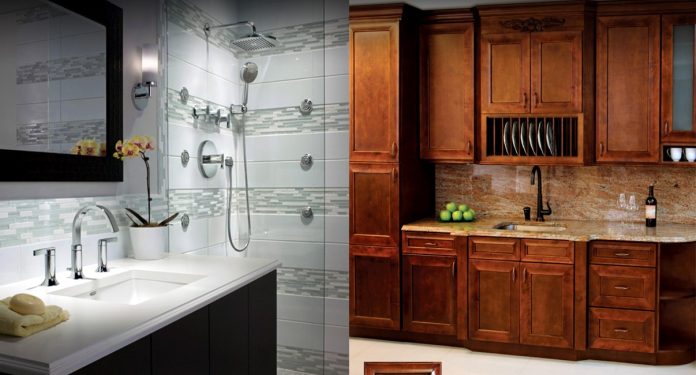The kitchen is often referred to as the heart of the home, and for good reason. It’s a space where families gather, meals are prepared, and memories are created. Designing a kitchen that seamlessly blends functionality with aesthetics is a rewarding endeavor that enhances the overall ambiance of your home. In this detailed article, we’ll explore key elements and considerations for creating a Kitchen and bath remodeling that not only serves its practical purpose but also becomes a beautiful and inviting focal point within your living space.
**1. *Understanding Your Lifestyle Needs*
Before diving into the design process, take a moment to understand your lifestyle and how you use your kitchen. Consider factors such as the frequency of cooking, the number of people using the space, and whether it doubles as a social hub. Tailoring the design to your specific needs ensures that the kitchen becomes a functional and personalized space.
**2. *Efficient Layout Planning*
The layout of your kitchen plays a pivotal role in its functionality. The three primary kitchen layouts—galley, L-shaped, and U-shaped—offer different advantages. Choose a layout that maximizes workflow, ensuring that essential areas like the cooking zone, preparation area, and storage are strategically placed for efficiency.
**3. *High-Quality Cabinetry for Ample Storage*
Invest in high-quality cabinetry to provide ample storage while contributing to the overall aesthetics of the kitchen. Consider features such as soft-close drawers, pull-out shelves, and customized organizational solutions to optimize storage space and keep the kitchen clutter-free.
**4. *Thoughtful Countertop Selection*
Selecting the right countertop material is crucial for both functionality and visual appeal. Granite, quartz, and butcher block are popular choices, each offering unique benefits. Consider factors such as durability, maintenance, and aesthetics to find the perfect balance for your kitchen.
**5. *Strategic Lighting Design*
Well-planned lighting enhances the functionality and atmosphere of the kitchen. Combine ambient, task, and accent lighting to create a well-lit space that accommodates various activities. Pendant lights over the kitchen island, under-cabinet lighting, and recessed fixtures can all contribute to a balanced and inviting ambiance.
**6. *Quality Appliances for Efficiency*
Investing in high-quality appliances not only improves the efficiency of your kitchen but also elevates its overall design. Choose energy-efficient appliances that suit your cooking habits and lifestyle. Integrated appliances, such as built-in ovens and refrigerators, contribute to a seamless and cohesive look.
**7. *Timeless Design Elements*
While trends come and go, incorporating timeless design elements ensures that your kitchen remains stylish for years to come. Neutral color palettes, classic cabinet styles, and durable materials contribute to a timeless aesthetic. Consider adding personal touches through accessories and decor items that can be easily updated.
**8. *Functional Kitchen Islands*
A well-designed kitchen island serves as a multifunctional centerpiece. It can provide additional counter space, storage, and seating. Customize the design to fit the dimensions of your kitchen, ensuring that the island enhances rather than impedes traffic flow.
**9. *Thoughtful Placement of Appliances and Fixtures*
Place appliances and fixtures strategically to create a cohesive and efficient workspace. Consider the kitchen work triangle, which involves positioning the stove, refrigerator, and sink in a triangular layout to optimize workflow. Ensure that commonly used items are within easy reach for convenience.
**10. *Personalized Design Touches*
Inject your personality into the design by incorporating personalized touches. This could include a unique backsplash, customized cabinet hardware, or open shelving to display cherished items. Personalization adds character and warmth to the space, making it truly your own.
**11. *Durable and Easy-to-Clean Materials*
Kitchens are high-traffic areas prone to spills and stains. Choose durable and easy-to-clean materials for surfaces, flooring, and finishes. This not only contributes to the longevity of your kitchen but also makes daily maintenance a breeze.
**12. *Maximizing Natural Light*
Natural light can transform the ambiance of your kitchen. Maximize windows and consider features such as skylights or glass doors to bring in ample daylight. Natural light not only enhances the visual appeal but also creates a more inviting and energizing atmosphere.
**13. *Incorporating Greenery and Natural Elements*
Introduce elements of nature into your kitchen design to create a fresh and vibrant atmosphere. Potted herbs, a small indoor garden, or even a strategically placed vase of flowers can add a touch of greenery and natural beauty.
**14. *Seamless Integration with the Rest of the Home*
Ensure that the design of your kitchen seamlessly integrates with the overall aesthetic of your home. Consistent color palettes, flooring materials, and design themes create a cohesive flow, making the kitchen an integral part of the entire living space.
Conclusion
Designing a functional and beautiful kitchen is a balance between practicality and aesthetics. By incorporating these key elements into your kitchen design, you can create a space that not only caters to your cooking and entertaining needs but also becomes a welcoming and stylish hub within your home. The heart of the home deserves thoughtful consideration and attention to detail, resulting in a kitchen that serves as a source of joy and inspiration for years to come.
